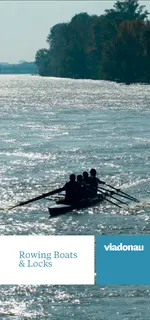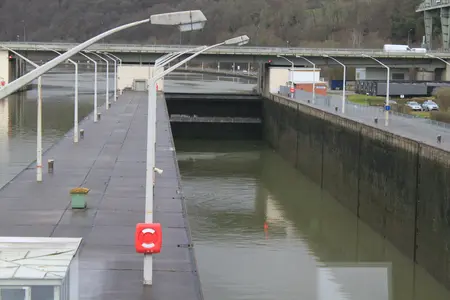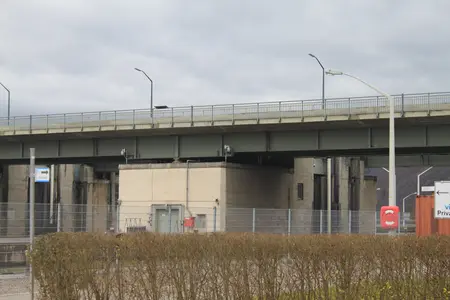viadonau is responsible for the supervision and traffic control at the nine Danube locks, as well as the lock at Nussdorf on the Danube Canal. The lock installations themselves are owned by the Verbund Hydro Power AG which is responsible for maintaining the lock infrastructure.
The smooth and service-oriented operation of the Danube locks is an essential component of a well-functioning waterway infrastructure. Therefore, individual measures are continuously taken, in order to improve customer-orientation and ensure the functionality and safety of the facilities.
Improve information on locks
The information on the status of the Austrian locks – made available via the DoRIS website as well as the DoRIS mobile app - was enhanced, in order to provide the users with more detail in case of obstructions.
For captains of leisure crafts viadonau provides specific information in the form of brochures in English and German language, in order to ensure smooth and safe passage through the locks with pleasure crafts (sport boats, rowing boats and similar small water vehicles). At suitable locations along the Austrian Danube, instructions for the retrieval of the brochure via mobile phone were positioned.
Information on dangerous goods transports
When locking dangerous goods transports, certain precautions need to be taken. Until 2015, the legally required reporting of dangerous goods transports was made by means of forms sent per fax or email to the first lock along the respective transport route. Subsequently, this information had to be forwarded manually to the next lock by the lockmaster. With the introduction of the electronic reporting of these transports (see measure 09. Develop River Information Services further) this process was automated as far as possible. All locks along the declared transport route receive the information on the respective dangerous goods transport automatically via email and as an entry in the electronic lock management system. As a result, all relevant information is available to the lock personnel automatically and in a timely manner.
Improve lock safety
In cooperation with the Verbund Hydro Power AG, which is responsible for the lock infrastructure, the signalling installations and the lighting were improved at several locks. Meanwhile, all entry and exit signals at all locks were exchanged for highly visible and low-maintenance LED lights. Also the general lighting of the lock facilities and the lock chambers will gradually be exchanged for LED lights.
In 2017 rotatable cameras were installed on the upper heads of the locks for the purpose of overseeing the locking procedure and the vessels in the chamber. In 2018 the lower heads of both lock chambers of the lock Wallsee were also equipped with such cameras (pilot operation). In 2019 all other locks will as well be equipped with rotatable cameras at the lower heads. Additionally, it will then be possible to record the footage.
Lock management in border sections
The efficient planning and sequencing of lockings helps to reduce unnecessary waiting times and avoid empty lockings. It is thus important for the lock personnel to be notified of approaching vessels as early as possible. At all Austrian locks the respective next lock that needs to be passed is informed automatically about departing ships by the previous lock via the electronic lock management system. Between the German lock Jochenstein and the Austrian lock Aschach,
40 km downstream, this data exchange is currently carried out by means of fax messages. The automatic notifications via the lock management should also be introduced in the border section. A bilateral agreement is currently being elaborated with Germany.
General information concerning the operation of locks is available here.
Optimised lock management
As part of the renewal of the DoRIS infrastructure (description under Measure 09), the lock hardware was replaced and the operating system updated. As a new service, the estimated time of arrival at the locks is calculated on the basis of AIS data from approaching ships. This allows the lock supervisory bodies to plan the locks more efficiently. This service has been fully operational since December 2020.
The lock revision, which takes place every two years, is just as important for optimizing lock management. More details can be found under measure 06.
The activities make a substantial contribution to the implementation of measures
06. Implement efficient lock maintenance and 08. Continuously improve lock operation of the Action Programme for the Danube 2022.


